Monsoon Gardening Tips - How To Care For Plants In The Rainy Season
The changing weather makes everyone entail some adjustments; for instance, winters require warm clothes, monsoon requires umbrellas, and summers are more about keeping ourselves cool. Like us, our plants also need a bit of tampering in the care and attention they seek. Greenery adjusts well to the changing climates, but as loving plant parents, we must care for our green buddies in the best way possible so know about monsoon gardening tips
Every season demands specific changes in the treatment provided to the plant buddies. As winters call for overwintering plants, summers might ask for a bit of shelter; similarly, monsoon impacts the growth of the plants in its own way. So, here’s everything you will need to learn about monsoon gardening tips in India.
How To Take Care Of Plants In Rainy Season?
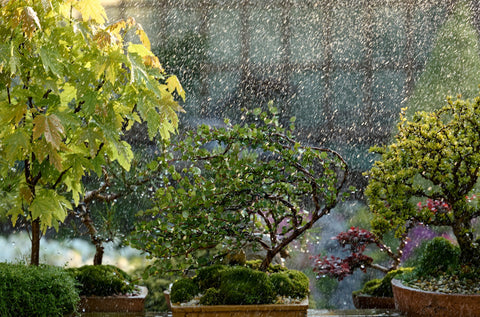
Growing plants in rainy season is all about keeping plants healthy during rainy periods when the sun is covered with dewy clouds almost every day. Many factors vary for plants during the monsoon days due to alterations in the temperature outdoors, regular hydration, which can sometimes get overloaded, and pests who invite themselves to seek moisture-laden soils. But fret not, for we are here with the best rainy season plant care tips:
#1 Pre-monsoon Pruning
Well, the actual care for plants starts way before the monsoon season knocks on our doors. This is one of the most underrated rainy season plant take care tips, but giving them a nice & clean trim session before the upcoming monsoons will make way for healthier growth during the rainy days. Removing dead & decayed growths will allow the plant to concentrate its energy on regeneration through smoother air circulation. Also, pruning is a sure-shot method of controlling the onslaught of fungal diseases in the greenery before the rains strike down.
#2 Check Drainage
Your plants’ monsoon care regime should ideally begin with checking the drainage holes in floor planters. Firstly, ensure each planter carries a bottom hole, as no matter the weather, without a clean drainage hole, most of your plants will rot and die. Further, check if the drainage holes require maintenance due to particles getting stuck inside the soil. One easy way to check this is by poking a stick inside the hole; if it goes in quickly, you are good to go, but if it doesn’t, remove the plant and change the soil. Also, ensure all planters are kept on planter trays, allowing them to drain faster while keeping the surface tidy.
#3 Soil Care
Prepare a mix of plant soil with garden manure, mixing two parts of the former and one of the latter. This enriching potting mix will nourish your plants while keeping the soil well-drained at all times. Further, check if all the pots are filled up to half inches from the brim; if not, add more soil till the pot gets almost full. Remember, you only wish to leave about half inches at the top to let the water drain quicker instead of logging in the container. This practice will ensure water doesn’t reach empty spaces in the soil, as there will be no empty spaces for it to reach. Moreover, loosen the soil whenever possible, as it tends to get compacted due to continuous showers.
#4 Monsoon Trimming
Nature often overpours its love in the form of rains, which leads to thriving growth in some plants. Such climates ask us to be extra vigilant while trimming our plants during monsoons because it will no more just be for grooming purposes. During monsoons, it is better to cut the lower leaves so they don’t become a part of any waterlogged situation. Also, lower parts of the plants are more susceptible to fungal diseases during monsoons, so pruning them well will take care of any pesty predictions. Further, remove any damaged part so that it doesn’t catch an infection which might later spread to the whole plant.
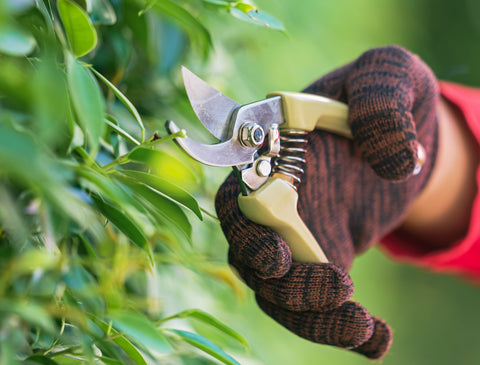
#5 Use Disinfectants
We all know that plant fungal infections are common during rainy days, so it is suggested to spray disinfectants every fifteen days during the rainy season. One may use natural fungicides like neem oil, hydrogen peroxide, or some other variant available in online gardening stores. Mix one tablespoon of fungicide in three liters of water and apply it to the plants with a spray bottle. Constant application of fungicides every fortnight will ensure your plants stay from fungus, bacteria, and other germs.
#6 Insecticides & Pesticides
Monsoon is the favorite season for those pests you never wish your plants to meet. Use premium-quality insecticides and natural pesticides for plants like neem oil every ten to fifteen days to let your plants live a pest-free life. Mix about five milliliters of good-quality insecticide in one liter of water and about three milliliters of liquid soap. Repeat this every fortnight to keep your greenery devoid of insects and further diseases. You can also make the solution once and store it for future uses.
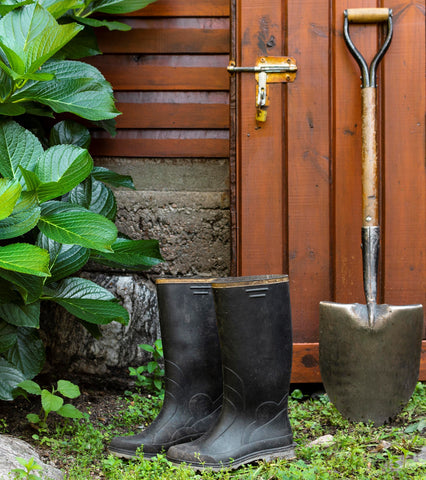
#7 Feed Fertilizers
Rain is often responsible for washing the topsoil away with heavy downpours, and the topsoil is as crucial for plants as measured watering, for it contains all the basic nutrients the plants need for thriving growth. Whether you pick chemical fertilizers or organic fertilizers, ensure the plants receive balanced doses of nitrogen, potassium, and phosphorous. Give them a balanced diet during the rainy season to ensure the soil doesn’t lack the most critical nutrients.
#8 Pot Shifting
Although the sun seems a bit shy during the cloudy weather, whenever you can shift your hardy plants like succulents & cacti to a sunnier spot, please do. Also, ensure that hardy plants are not sitting directly under the rainfall, as they are the last beings on earth to like the rainy season. Other plants might like the monsoons more, but they will succumb to root rot or decayed growths if there’s too much rainwater in the containers, so try moving them around whenever possible. Also, clean the planter trays kept under the containers to keep a check on unnecessary mosquito breeding.
#9 Watering Schedule
Unlike summer and spring, the soil mostly stays moist during the rainy days. This is because the sun is not that intense, plus the plants receive ample water naturally. Although water is a crucial element when it comes to growing a garden, it is also important to understand that too much of anything is bad. While underwatering the plants makes them dull and droopy, overwatering causes the roots to rot internally. Keeping all this in mind, avoid unnecessarily hydrating your plants during rainy days. Only water when there have been no rains in the previous days, and you see the soil drier than before.

#10 Research & Learn
This is not an ongoing lecture, but we must mention the value of better understanding the plants to grow a healthy garden. Nature’s bountiful diversity allows us to grow greenery in all weathers; however, all plants are different, and they have different demands. For example, succulents & cacti are lovers of tropically heated locations, so too much rainfall will make them go crazy, and you will need to take care of them accordingly. On the other hand, vegetables and annuals need ample hydration to showcase their healthy yield. Do you see? The more you learn about the plants in your garden, the better you will care for them, irrespective of the changing seasons.
How To Take Care Of Indoor Plants In Rainy Season?
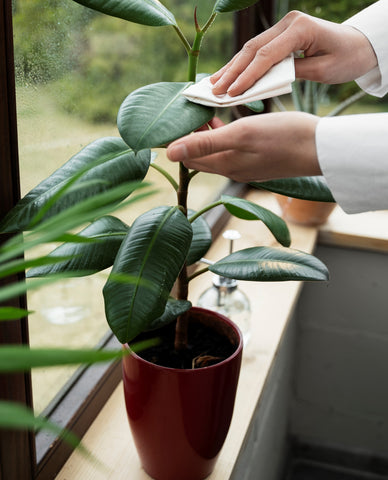
All of the above-mentioned tips for protecting plants from rain apply to indoor plants. Begin by pruning them before the first rain and checking the viability of the drainage holes. Never overwater the plants, no matter the season, and fertilize them, if needed. One point to consider separately for houseplants is to keep them on brightly lit windowsills that remain sheltered yet receive filtered sunshine. Also, clean the plant’s leaves regularly so that sunlight absorption stays on point.
Which Plants Are Suitable For The Monsoons In India?
Now that we have learned about plants in rainy season tips, it’s time to know about the plants that grow in rainy season. There’s a wide variety of plant species that one can sow during rains, and also the ones that blossom with rich-colored blooms due to the continuous drizzles. Here’s a list:
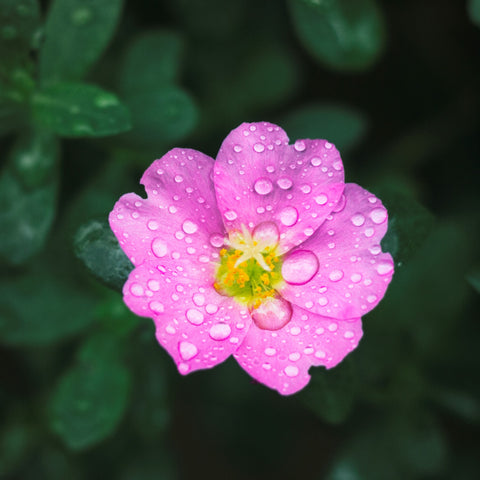
➤ Pink rain lily
➤ Hibiscus
➤ Chilli
➤ Purslane
➤ Plumeria
➤ Radish
➤ Periwinkle
➤ Oleander
➤ Okra
➤ Jasmine
➤ Balsam
➤ Eggplant
➤ Marigold
➤ Cucumber
Preparing plants for rainy season is not a tough job; it just requires the gardeners to be extra cautious about the altering needs of their greenery. Now that you have complete knowledge of growing plants during the splish and splash of rains, you can grow and maintain your garden without much hassle. Order gardening supplies required for treating your plants right from the online lanes of green websites like ours and stay carefree till you receive the package on your doorstep. Happy gardening!
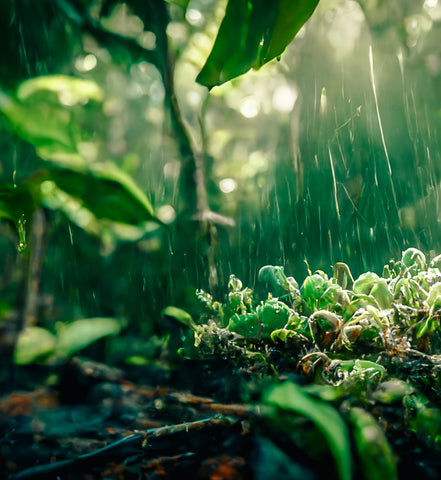
FAQs About Monsoon Gardening Tips In India
Ques: How Can I Protect My Soil-grown Plants From Heavy Rains?
Ans: If you can transfer them to a planter, you can move them to a shady spot that doesn’t receive direct rain. However, if that’s not an option, grab perforated sheets to safeguard them from too much rainfall.
Ques: How To Provide Light To Indoor Plants During Monsoon?
Ans: Continuous rainfalls might send the sun on vacation, and if such a situation arises, you can install grow lights for your indoor plantations to provide ample artificial light till the sun returns on duty.
Ques: Does Monsoon Cause Plants To Die?
Ans: No, monsoon is an excellent time for your plants to undergo rejuvenation, given you provide them with apt care and maintenance.
Ques: Do Plants Grow Faster In The Rainy Season?
Ans: Yes, several studies suggest that rainwater is great for freeing varying nutrients in the soil for the roots to absorb them quicker than in other seasons.
Ques: Should I Weed My Garden During Monsoons?
Ans: Hundred percent! Rains not only push our chosen plants to thrive but also push the unnecessary growth to peek out from under the surface. Remove the weeds whenever you catch them sprouting without an invitation.


